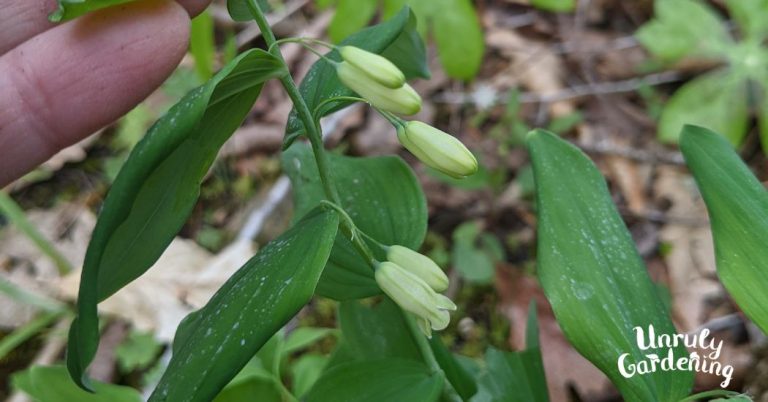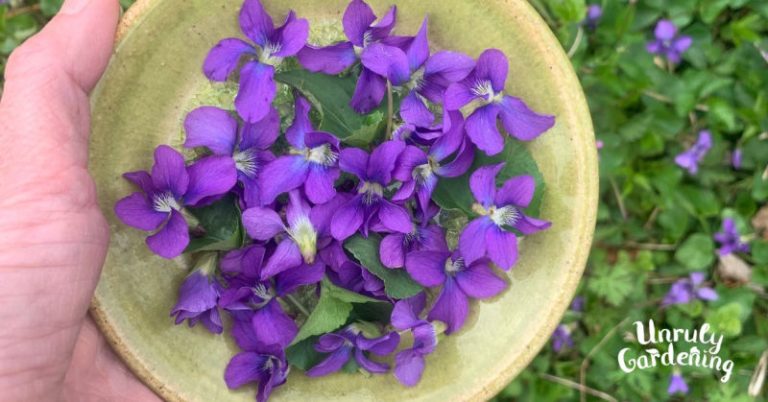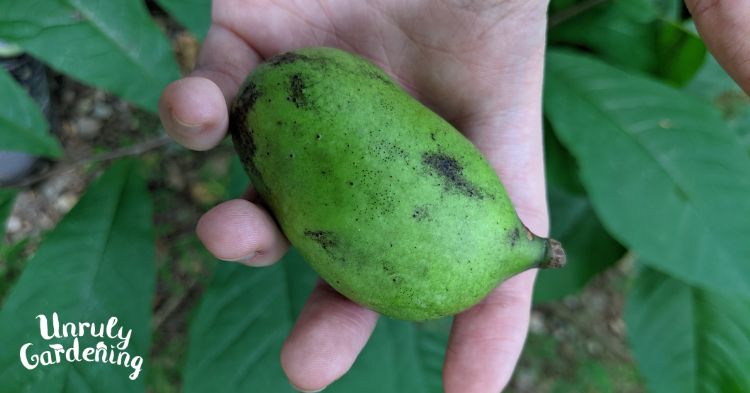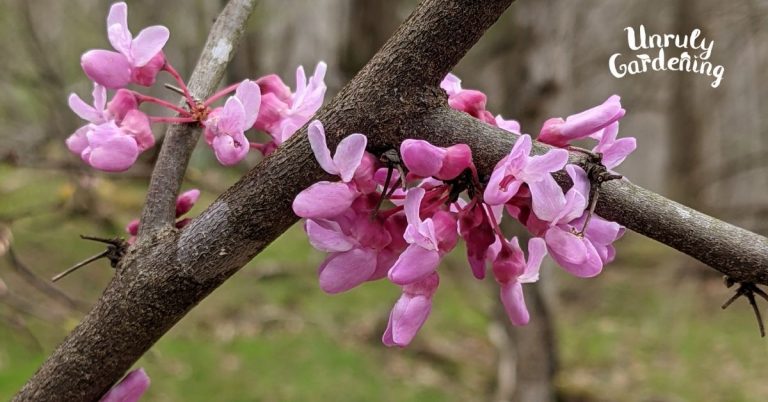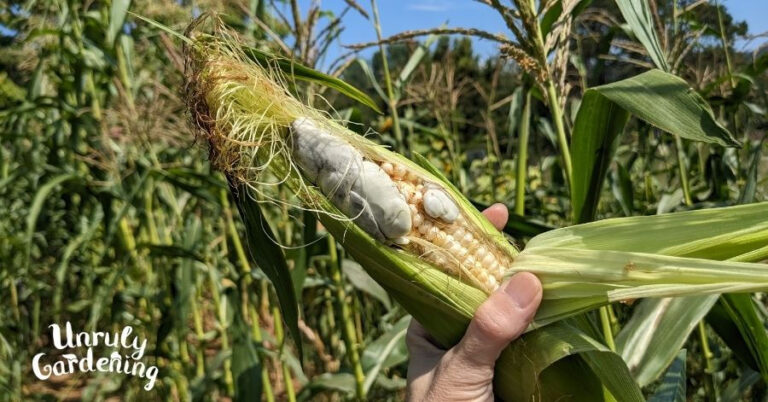Foraging Wineberry
Wineberry, also called Japanese raspberry, or wine raspberry, is an invasive (but very delicious!) species that can be found growing wild in the Eastern parts of North America.
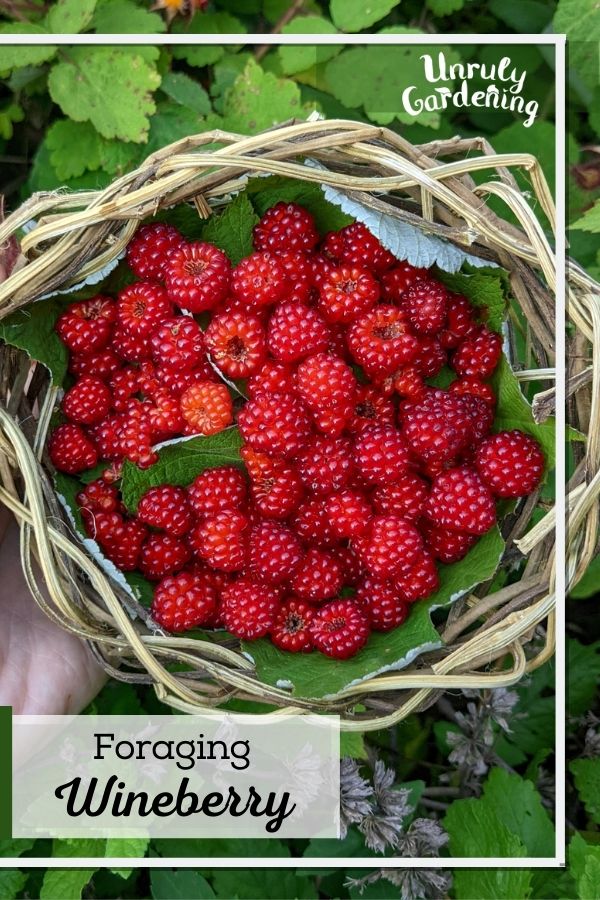
Wineberry (Rubus phoenicolasius) has no poisonous look-a-likes in the U.S., making it a good option for beginner foragers to explore.
Around here (growing zone 7 USA), the fruit is ready to pick near the end of June, just before blackberries start ripening.
They look a lot like raspberries, but there are some key identifying features that I’ll detail below.
Wineberry Canes
The arching canes are usually distinctly purple-reddish and have prickly hairy bristles on them.
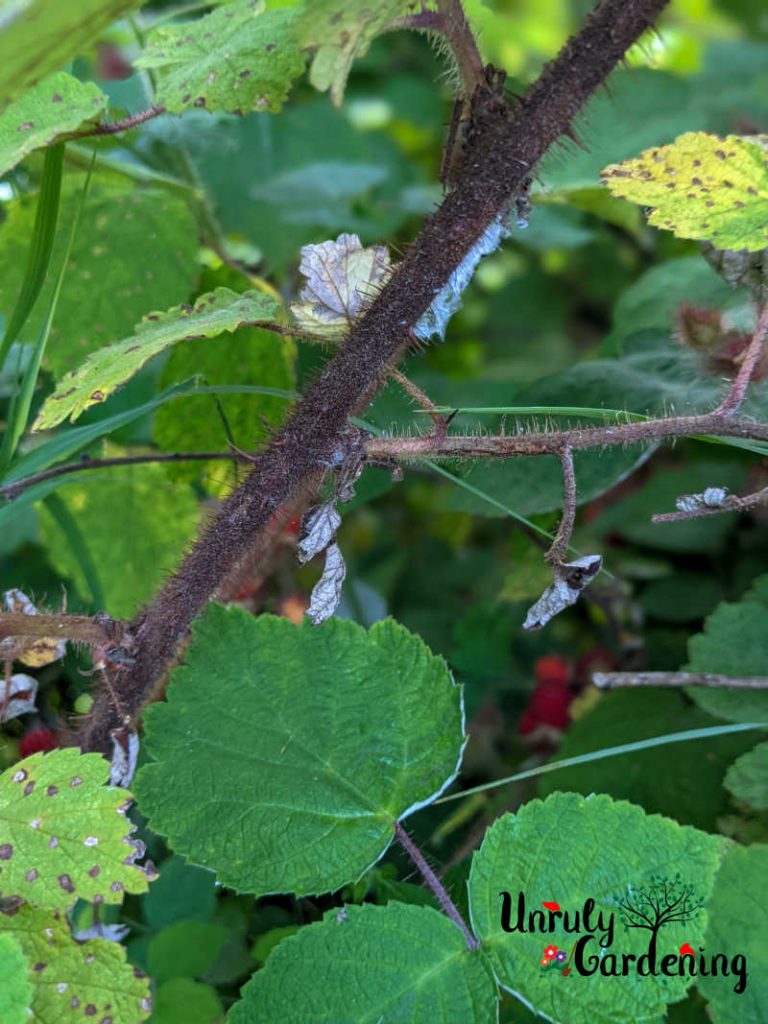
Wineberry Leaves
Wineberry leaves (on the right in the photo below) are somewhat rounder, and sometimes described as being more heart-shaped, whereas raspberry leaves are less rounded.
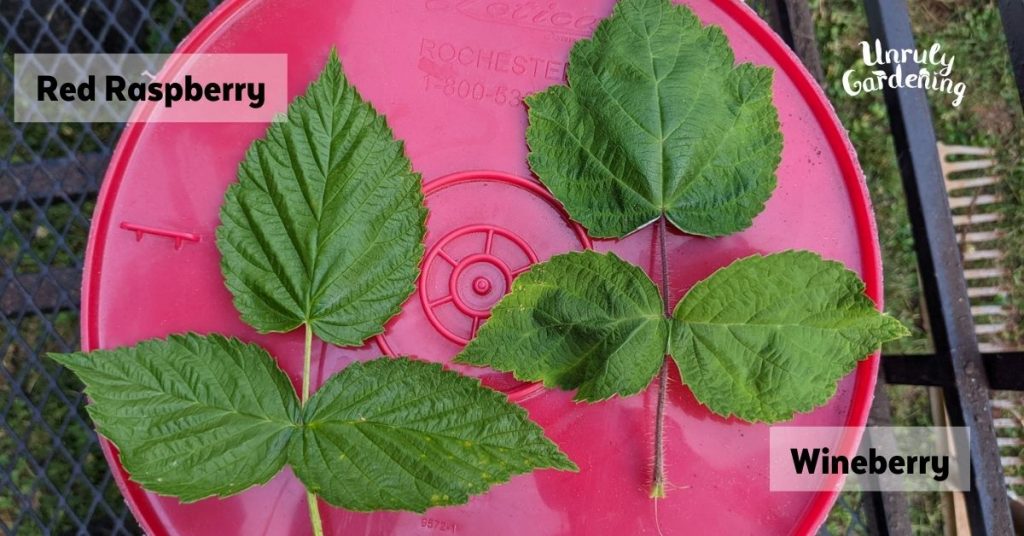
The backs of both raspberry and wineberry leaves are lighter/whiter, as shown below, but they still show that distinctive shape difference.
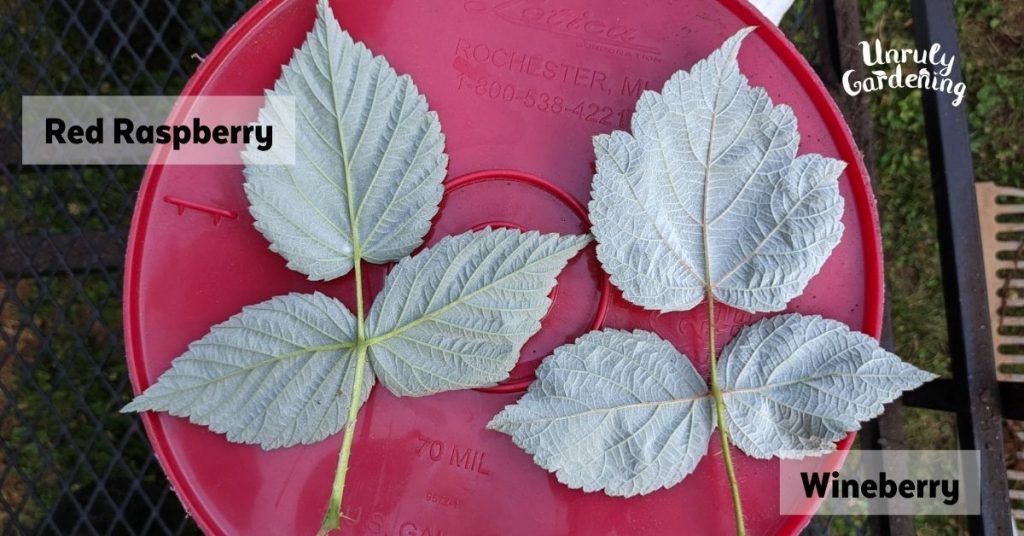
Immature Wineberries
Immature wineberries are covered with a reddish-purple hairy calyx that protects the fruit. When the fruit is close to ripening, the calyx opens.
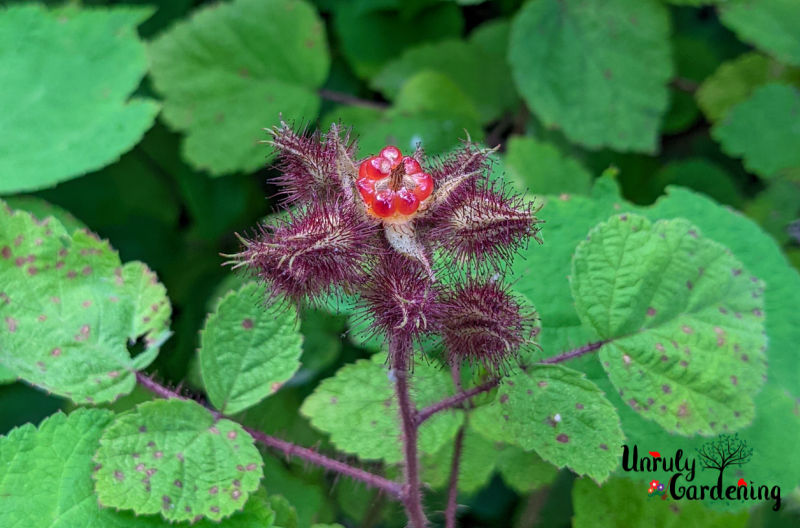
Ripe Wineberries
It’s pretty easy to tell when wineberries are ripe.
They’ll be a bright red color and will easily pull off of the plant, leaving behind their little yellow cone-shaped centers.
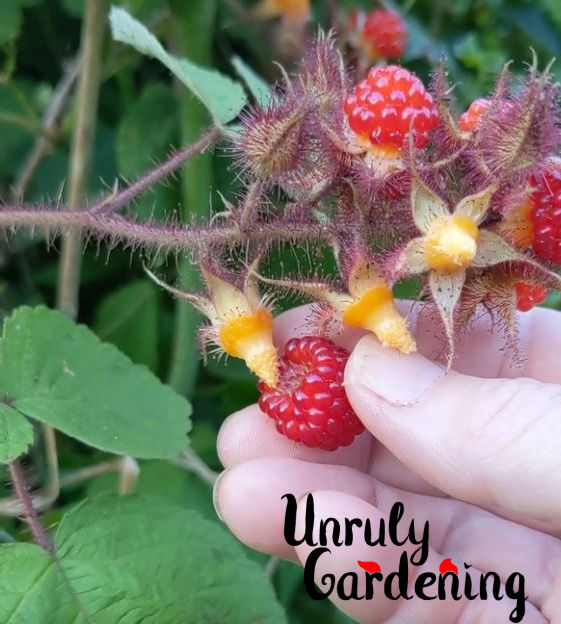
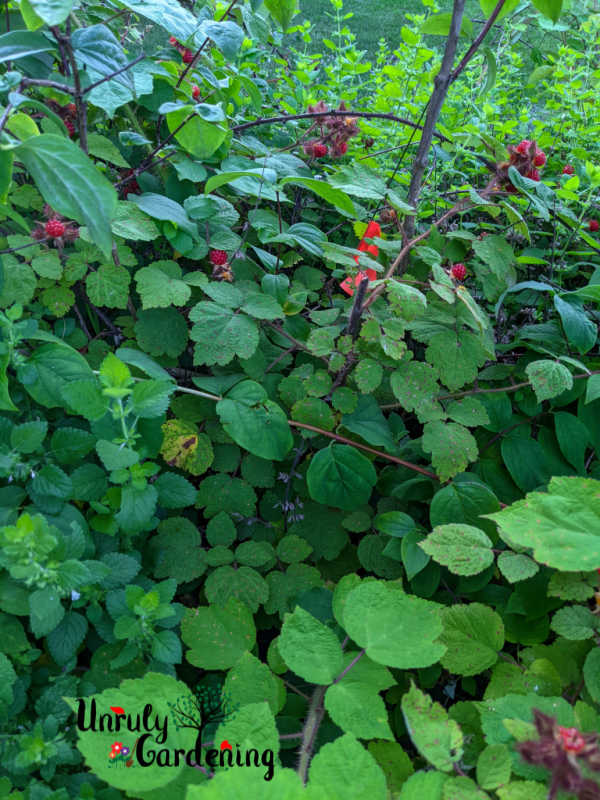
What to Do with Wineberries
We have a big patch of wineberries at the edge of our yard, so our favorite way to use them is to grab a handful for snacking, each time we walk by that area.
They have a very short shelf life, so they don’t store or transport well. For that reason, you’re unlikely to spot them in grocery stores or for sale most places – these are a treat best enjoyed freshly picked!
In general, you can use wineberries in place of raspberries in many recipes.
Wineberries also freeze well.
To freeze wineberries, place them in a single layer on a parchment lined baking sheet. Freeze the berries until solid, then package in freezer bags, freezer containers, or seal-a-meal type packaging. Depending on the quality of your packaging, they should stay fresh for 9 months to 1 year.
You don’t need to wash wineberries before freezing. Instead, just be careful to pick from clean areas – not roadsides or places that may have been sprayed with herbicides, and leave behind any berries that are dirty or blemished.
Our articles are for information and idea-sharing only. While we aim for 100% accuracy, it is solely up to the reader to provide proper identification. Be sure to seek out local foraging classes and plant walks, and invest in mushroom and foraging guides suitable for the area you live in, since some wild foods are poisonous, or may have adverse effect.
Sources:
US Forest Service: Rubus phoenicolasius

